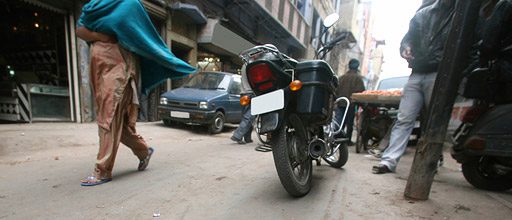
Diseases of the world's poor desperately underfunded
Many of the diseases that affect the most disadvantaged populations across the world are conditions known collectively as neglected diseases. Including conditions that claim millions of lives each year – dengue, diarrhoeal diseases and rheumatic fever – these diseases have received relatively little funding, attention and profile compared to many of the common chronic conditions that affect high income countries.
Over one billion people are living with one or more neglected disease and more than six million people die from these conditions each year. Much work needs to be done not only to ensure effective healthcare reaches these patients, but that the money used to support research into products that treat and prevent these conditions is spent wisely.
A team of neglected disease experts at The George are conducting a five-year survey tracking investment on new products for neglected diseases. Led by Dr Mary Moran, a well-known commentator on medicines for neglected diseases, the team has released the second-year report from the ongoing survey that will continue to help funders identify funding gaps and the best areas for investment.
The Global Funding of Innovation for Neglected Diseases (G-FINDER) survey found a total of $US2.96 billion was invested into neglected disease research and development in 2008, a slight increase from the previous year due to including new survey participants in the second-year survey. However, Dr Moran is pleased to see India and other developing countries playing a stronger role in fighting these conditions.
India provides significant funding
“India was included in the survey for the first time, and they have emerged as a serious government funder for neglected disease R&D. Collectively, Innovative Developing Countries Brazil, South Africa and India invested $US76.6million. Importantly, these investments were directed to diseases such as dengue and leprosy that have not traditionally been favoured by High Income Country funders”, Dr Moran said.
India is now the fifth largest public funder in the field, investing a total of $US32.5million in 2008. The forces behind this are government agencies committed to the cause - the Indian Council for Medical Research (ICMR), the India Department of Biotechnology, the Department of Science and Technology and the Council of Scientific and Industrial Research. Many wealthy governments provided little or no funding.
“The G-FINDER survey report has put India as the 5th largest public funder of neglected diseases, and ICMR provides 60% of the funds. Visceral leishmaniasis and leprosy are amongst the most neglected diseases, and we must further improve our funding for research to find new tools to combat them”, said Dr V M Katoch, Secretary, Department of Health Research, and Director-General, Indian Council of Medical Research, New Delhi.
The team found that much of the global funding ground to a standstill in 2008, with funding cuts or freezes across the board including a $US26.3 million decrease in funding from High-Income Countries. On the flip side, the Bill & Melinda Gates Foundation increased its funding (to $US617m), who, alongside the US National Institutes of Health ($US1.1bn) provided nearly 60% of global funding in 2008.
“In these tough economic times, every contribution to neglected disease R&D is absolutely critical,” said Dr. Regina Rabinovich, Director, Infectious Disease Development at the Bill & Melinda Gates Foundation. “We applaud the leadership role that governments are playing by supporting R&D for diseases endemic in their own countries, as well as the sustained investments from the private sector.”
Big three diseases capture lion’s share
As revealed in the first report, just three diseases captured the lion’s share of funding, together accounting for nearly three-quarters of global investment: HIV/AIDS ($1.2b, 39.4%), malaria ($541.7m, 18.3%) and tuberculosis ($445.9m, 15.1%). A worrying trend is developing where many of the biggest killers such as leprosy, rheumatic fever, trachoma and Buruli ulcer, which collectively received less than 0.4% of funding, are desperately underfunded.
“This is why it’s vital to have this information. Our aim is to provide data as consistently and comprehensively as possible to help funders better understand where the gaps lie and how their investments fit into the global picture”, Dr Moran added.
The Gates Foundation provided funding for five annual G-FINDER surveys from 2008 to 2012.

